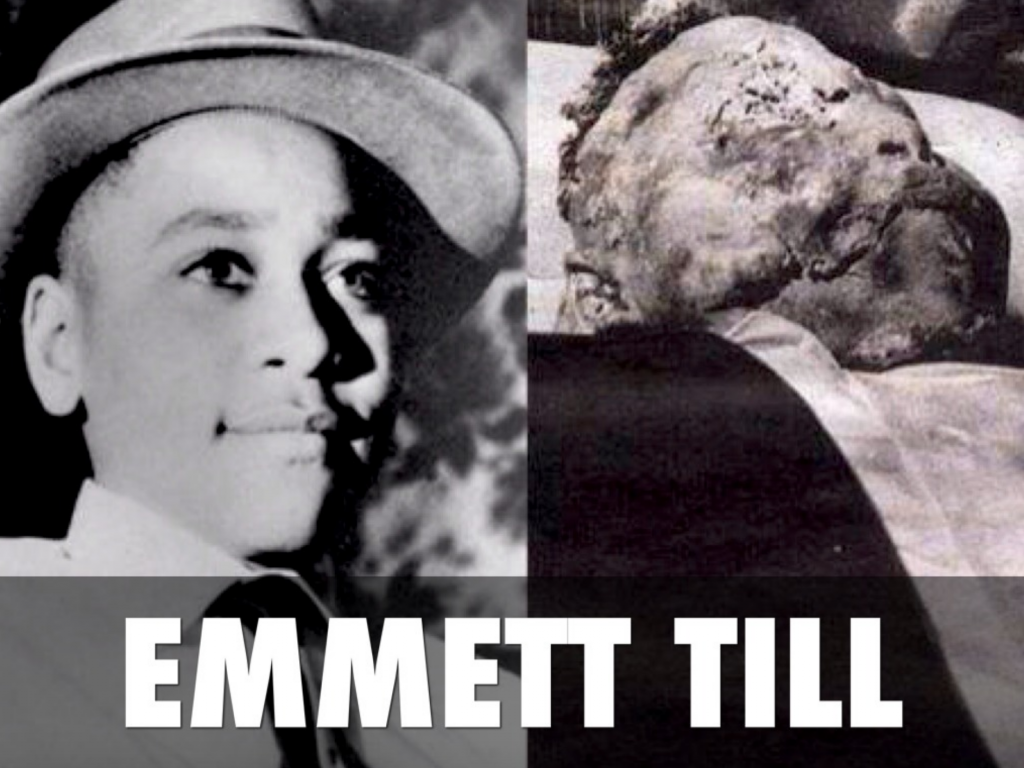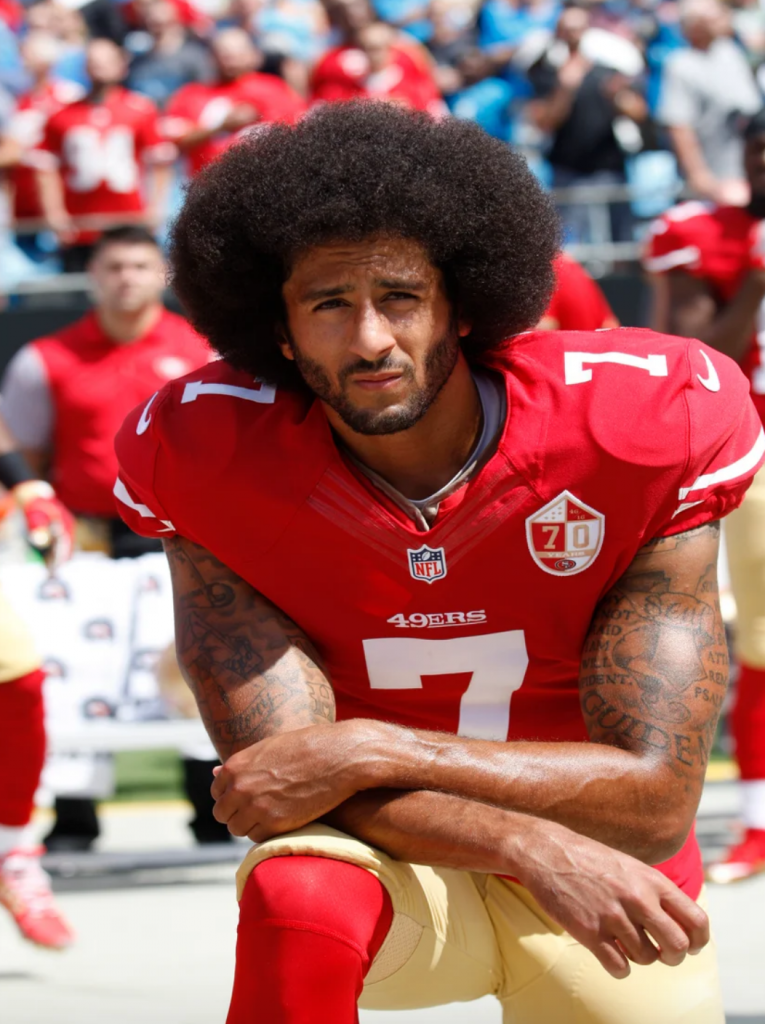
Vincent D. Jennings graduated in May 2020 from the University of Alabama with a dual B.A. in Religious Studies and Psychology. In the Fall of 2019 he began an in-depth study on America’s history of racial violence as part an independent study course with REL’s Prof. Theodore Trost — which culminated in this four-part series.
With the evolution of slavery in mind, consider a recent movie entitled “Just Mercy,” which chronicles the fight of the Equal Justice Initiative to defend wrongly convicted inmates condemned to death row in Alabama.
A memorable line from that film regarding an African American who was facing the death penalty was: “No matter what you call it, it’s just another way to lynch a black man.” This line speaks to the more widespread concern regarding how the death penalty is being used to perpetuate excess violence against African Americans.
After the 1920s, once lynching became a source of national and international condemnation, capital punishment emerged as a less controversial means to achieve the same result. Minority defendants quickly learned that replacing a lynching with a death sentence did little to assist them to receive a fair trial, conviction, or sentence (Taylor 2019). One example is Henry Wilson in Sumterville, Florida, who, in 1902, was convicted of murder. After a trial lasting just two hours and 40 minutes the judge promised the mob of armed white men filling the courtroom that the ordered death sentence would be carried out by public hanging — though that violated state law. When the execution was set for a later date, the mob threatened vigilante action. In response, Florida officials quickly moved up the date, authorized Wilson to be hanged before a jeering mob, and congratulated themselves on having “avoided” a lynching. In fact:
By 1915, court-ordered executions outpaced lynchings in the former slave states for the first time. Facing the unending threat of attack, nearly 6 million black Americans fled the South between 1910 and 1970 as traumatized refugees, abandoning homes, families, and work in hopes of escaping racial terror. Between 1910 and 1950, African Americans fell to just 22 percent of the South’s population but constituted 75 percent of those executed in the region. More than 80 percent of documented lynchings in America between 1889 and 1918 occurred in the South, and more than 80 percent of the nearly 1,400 legal executions carried out in this country since 1976 have also been in the South. (Taylor, 2019)
Today, the notion of an inherent fear of the “black criminal” and an acceptance of dehumanizing people of color remain at the core of our national acceptance of a prison system geared more towards caging and warehousing than rehabilitation. Research has also shown that racial prejudice is at the core of public support for “tough on crime” laws which fuel long sentences and mass incarceration. So deeply entrenched is the presumption that people of color are dangerous and guilty that, according to a 2014 study, informing white Americans about racial disparities in incarceration rates led to more fear of crime and more support for punitive criminal justice policies (Taylor 2019).
As African Americans continue to bear the persistent presumption of guilt and dangerousness, their communities have become particularly susceptible to inequities in the administering of criminal justice. This is particularly true for young men of color who are disproportionately victims of implicit bias that marks them more frequently for police stops, searches, and violence. In turn, this results in higher rates of childhood suspension, expulsion, and arrest at school; disproportionate contact with the juvenile justice system; and disadvantaged plea negotiations. For “African Americans make up about 13 percent of the nation’s population, but constitute 28 percent of all arrests, 40 percent of the incarcerated, and 42 percent of those on death row” (Taylor, 2019).
It’s therefore important to note that targeted violence against African American’s did not end with slavery or even the lynching era. Consider the horrific case of 14 year old Emmet Till, or more recently the brazen deaths of black men, women, and children deemed dangerous — like Trayvon Martin, Tamir Rice, Laquan McDonald, Samuel DuBose, Alton Sterling, Aiyana Stanley-Jones, Eric Garner, Tanisha Anderson, Atatiana Jefferson, Philando Castile, Charleena Lyles, Sandra Bland, Breonna Taylor, Botham Jean, Ahmaud Arbery and now, George Floyd — each continues to demonstrate the consequences of a community bearing the burden of a racialized presumption of guilt.

My country ’tis of thee
sweet land of liberty,
of thee I sing…
As a sixth grader singing in Mrs. White’s elementary school glee club, I found myself once again singing joyfully, yet devoid of the full scope of the lyrics. It was only later that I came to understand that, for many in my father’s congregation, those lyrics did not ring true. Consequently, for them a song echoing proudly about liberty in “this land” did not resonate as much as a song waxing poetically about liberty in “that land.” Nestled in this lyrical contrast is far more than semantic symbolism, however; it is the very reflection of our nation’s deep and troubling racial divide.
Land where our fathers died…
Lamentably this is the first line that speaks to a somewhat shared experience in that song entitled “America (My Country, ‘Tis of Thee).” For indeed those on all sides of our nation’s racial divide have had fathers die in this land; but, alas, it’s the stark and tragically different manner in how they have died, and, more specifically, why they have died, where the road of our country’s history not only forks but becomes irrevocably paved with race, shame, and disgrace.
As an African American man, I am keenly aware of the existence of two Americas, of the legacy of systemic prejudice and the ever-present specter of racialized violence. I am also aware that America is still not ready to listen or even entertain the necessary discussion on this topic. I often speak to white people who insist that racism doesn’t exist and that we live in “a post-racial America,” to whom I then pose the question: Why do you go to the doctor? You go to doctors due to the training and specialization that has taught them things that you do not know; you go to the doctor because of their expertise in the field. Likewise, when it comes to being black in America, African Americans are the experts in the field. It is because of that expertise that we can speak to the correlated issues of racism and systemic injustice in ways that no one else can. Hence, it is counterproductive when others trivialize or dismiss as not true an experience that we live each day.
There is no doubt that racism and its violent correlates are alive and well in America. African Americans have been saying this from the moment that the first slave landed in America, to the last time Colin Kaepernick took a knee. So, the question is not “Does racial violence against blacks still exist?” but, rather, “When will America be truly ready to listen to us?” The time for our nation to search its soul is long overdue. The character of our nation is not reflected by how it treats the rich and privileged but, rather, how it treats its poor, underprivileged and minority communities.
Doing so will not only begin the long overdue process of healing our nation’s deep racial wounds but will also allow other long deserving citizens to share in the experience of knowing America as a ”great BIG BEAUTIFUL land.”